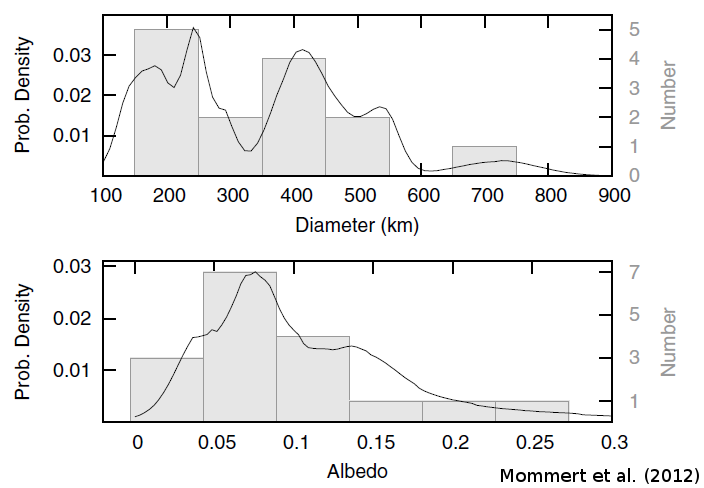Herschel Observations of Plutinos
Astronomy Plutinos Asteroid Physical Properties Herschel Space Observatory
Plutinos are a subpopulation of the Trans-Neptunian Objects (TNOs), which are pristine and icy objects on the outskirts of the Solar System. The orbits of Plutinos - which are named after their prototype, Pluto - are in 2:3 resonance with Neptune, meaning that by the time a Plutino performs 2 full orbits around the Sun, Neptune performs 3. This “mean motion resonance” provides a high degree of stability to the orbits of Plutinos. Hence, Plutinos are dynamically and physically pristine objects.
As part of the TNOs are Cool! project we have observed 123 different TNOs, including a number of Plutinos, with the Herschel Space Observatory in the far-infrared and sub-mm wavelengths. Herschel measured the thermal emission of these cold objects, which can be combined with optical brightness measurements to constrain their physical properties using thermal modeling.
From our observations of 18 Plutinos, one of which was Pluto, we derived the diameters and albedos of these objects.

We find a weighted mean albedo of Plutinos of 0.08±0.03, which is comparable to Scattered Disk Objects and Hot Classicals, both of which are other TNO subpopulations, as well as the nuclei of short-period comets and Centaurs. A comparison of the measured albedos and diameters with orbital properties shows no significant correlation; however, there is a weak trend of smaller Plutinos to be redder. We also find qualitative evidence that icy Plutinos have higher albedos than the average. Pluto has been excluded from this statistical analysis, as its thermal emission cannot be easily fit with a simple thermal model, which is due to its binarity and atmosphere.
Interestingly, none of the Plutinos that we looked at has an albedo as high as Pluto’s (0.52 average geometric albedo) nor is either of them only remotely as large as Pluto (~2400 km in diameter). Hence, Pluto is rather unique among the Plutino population.
The results of this study have been published as Mommert et al. (2012) in the journal Astronomy & Astrophysics.
Resources
- Mommert, M., Harris, A. W., Kiss, C., Pál, A., Santos-Sanz, P., Stansberry, J., Delsanti, A., Vilenius, E., Müller, T. G., Peixinho, N., Lellouch, E., Szalai, N., Henry, F., Duffard, R., Fornasier, S., Hartogh, P., Mueller, M., Ortiz, J. L., Protopapa, S., Rengel, M., & Thirouin, A. (2012), “TNOs are cool: A survey of the trans-Neptunian region. V. Physical characterization of 18 Plutinos using Herschel-PACS observations”, Astronomy and Astrophysics, 541, A93., publication, arxiv